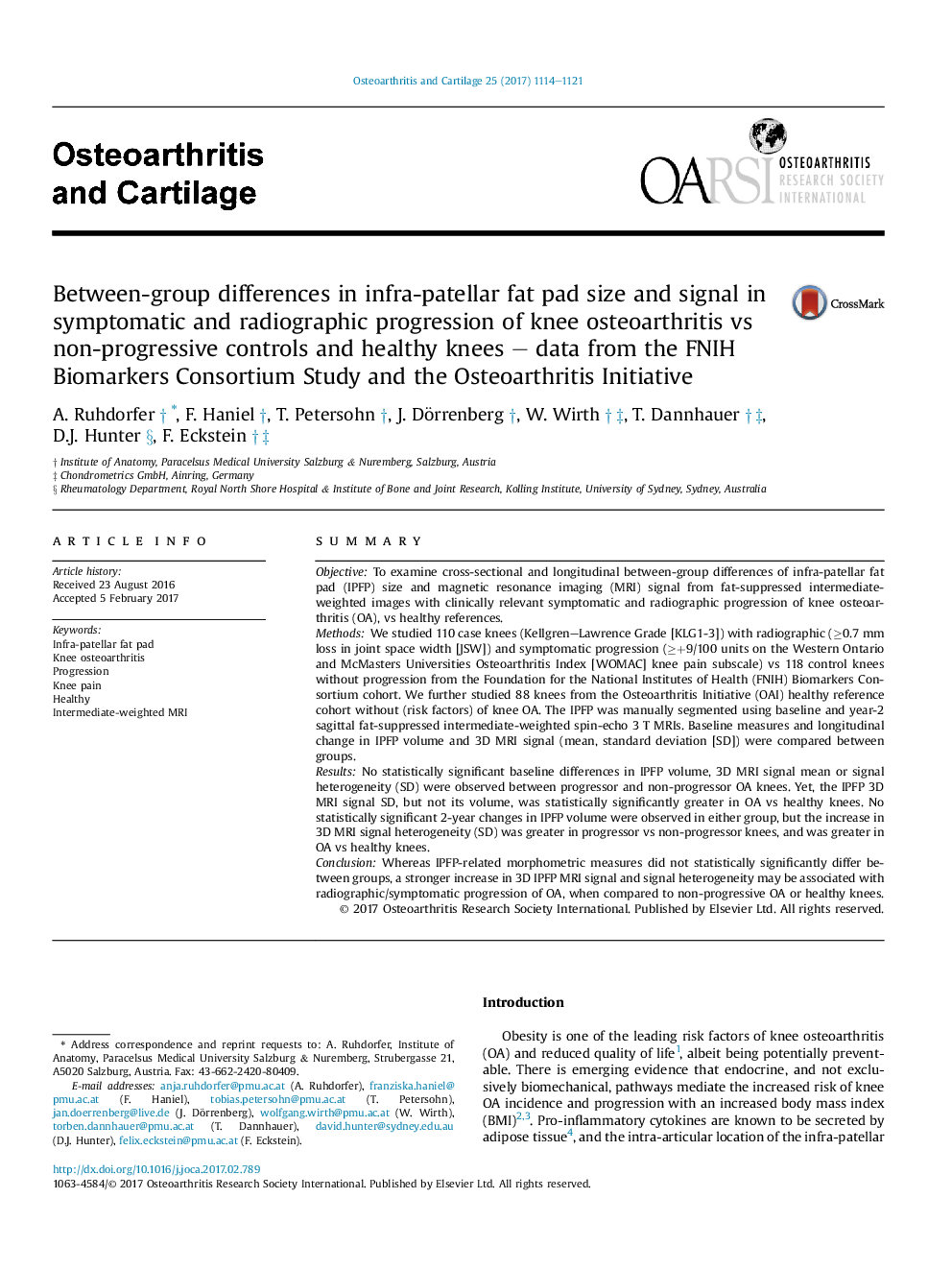| کد مقاله | کد نشریه | سال انتشار | مقاله انگلیسی | نسخه تمام متن |
|---|---|---|---|---|
| 5669313 | 1407956 | 2017 | 8 صفحه PDF | دانلود رایگان |

SummaryObjectiveTo examine cross-sectional and longitudinal between-group differences of infra-patellar fat pad (IPFP) size and magnetic resonance imaging (MRI) signal from fat-suppressed intermediate-weighted images with clinically relevant symptomatic and radiographic progression of knee osteoarthritis (OA), vs healthy references.MethodsWe studied 110 case knees (Kellgren-Lawrence Grade [KLG1-3]) with radiographic (â¥0.7 mm loss in joint space width [JSW]) and symptomatic progression (â¥+9/100 units on the Western Ontario and McMasters Universities Osteoarthritis Index [WOMAC] knee pain subscale) vs 118 control knees without progression from the Foundation for the National Institutes of Health (FNIH) Biomarkers Consortium cohort. We further studied 88 knees from the Osteoarthritis Initiative (OAI) healthy reference cohort without (risk factors) of knee OA. The IPFP was manually segmented using baseline and year-2 sagittal fat-suppressed intermediate-weighted spin-echo 3 T MRIs. Baseline measures and longitudinal change in IPFP volume and 3D MRI signal (mean, standard deviation [SD]) were compared between groups.ResultsNo statistically significant baseline differences in IPFP volume, 3D MRI signal mean or signal heterogeneity (SD) were observed between progressor and non-progressor OA knees. Yet, the IPFP 3D MRI signal SD, but not its volume, was statistically significantly greater in OA vs healthy knees. No statistically significant 2-year changes in IPFP volume were observed in either group, but the increase in 3D MRI signal heterogeneity (SD) was greater in progressor vs non-progressor knees, and was greater in OA vs healthy knees.ConclusionWhereas IPFP-related morphometric measures did not statistically significantly differ between groups, a stronger increase in 3D IPFP MRI signal and signal heterogeneity may be associated with radiographic/symptomatic progression of OA, when compared to non-progressive OA or healthy knees.
Journal: Osteoarthritis and Cartilage - Volume 25, Issue 7, July 2017, Pages 1114-1121